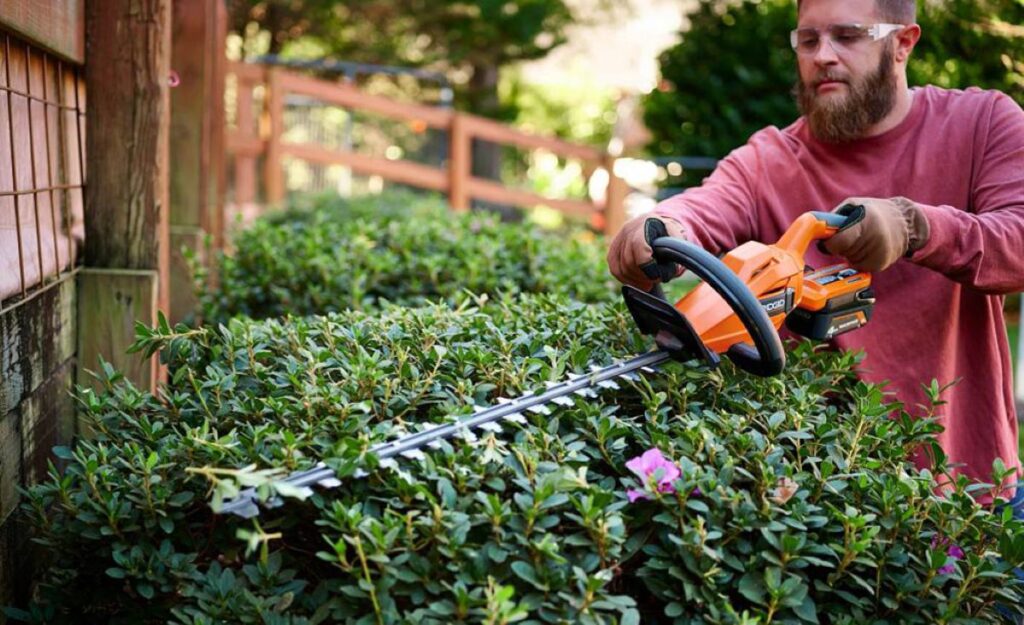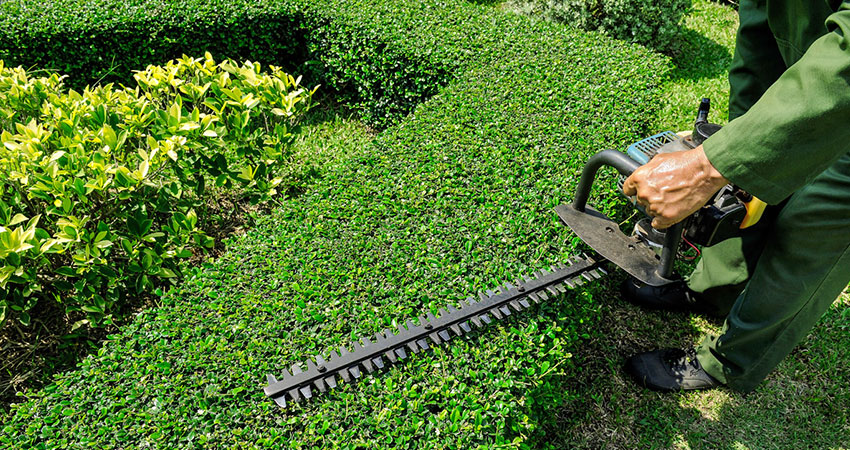When it comes to maintaining a beautiful garden, hedge trimming is a crucial task that many homeowners overlook. Understanding the costs involved in this service can help you plan a budget and maintain your garden effectively. This article delves into the various aspects of hedge trimming, including its importance, factors influencing the cost, and tips for budgeting.
The Basics of Hedge Trimming
Before diving into the costs associated with hedge trimming, it’s essential to understand what the task entails. Hedge trimming involves cutting or pruning hedges and shrubs to maintain their shape, promote healthy growth, and enhance the aesthetics of your garden. This practice not only contributes to the visual appeal of your outdoor space but also ensures that your plants thrive in a healthy environment.
What is Hedge Trimming?
Hedge trimming refers to the process of cutting and shaping the foliage of hedges. This not only keeps them looking neat but also ensures that they grow healthily. The process can range from simple cuts to more intricate shaping, depending on the type of hedge and the desired outcome. Different species of hedges may require unique trimming techniques; for instance, evergreen hedges may need to be trimmed differently than deciduous ones. Understanding the specific needs of your hedges is crucial for achieving the best results.
Why is Hedge Trimming Important?
Regular hedge trimming is not just about aesthetics; it also plays a significant role in plant health. By removing dead or diseased branches, you help prevent pest infestations and diseases that can damage the entire shrub. Additionally, properly trimmed hedges allow for better air circulation and sunlight penetration, promoting overall plant vitality. Furthermore, regular maintenance can encourage denser growth, which can provide better privacy and wind protection for your garden. This is particularly important in urban areas where space is limited and privacy is often a concern.
Moreover, hedge trimming can also enhance the overall landscape design of your property. Well-maintained hedges can serve as natural borders, defining spaces within your garden and creating a sense of structure. They can also be used creatively to frame views or highlight specific features, such as flower beds or pathways. As seasons change, the way hedges are trimmed can adapt to complement the overall seasonal aesthetics of your garden, ensuring that it remains vibrant and inviting throughout the year.
Factors Influencing Hedge Trimming Cost
Various factors can influence the overall cost of hedge trimming services, and being aware of these can assist you in budgeting appropriately. Understanding these elements will give you a clearer picture of what to expect when obtaining quotes.
Size and Number of Hedges
The size and number of hedges you have are primary determinants of the cost. Larger hedges require more time and labor to trim, which can increase the overall expense. Additionally, if you have multiple hedges, the price can escalate depending on the cumulative time and effort that will be taken to service all of them. For instance, a single large hedge might take several hours to trim, while a series of smaller hedges could collectively take just as long, but with added logistical challenges. It’s essential to assess your landscape and consider how the arrangement of your hedges might affect the efficiency of the trimming process.
Frequency of Trimming
How often you get your hedges trimmed can also affect the cost. Regular trimming might lead to a lower cost per session since the job remains manageable. In contrast, hedges that are overgrown or have not been trimmed for a while will likely require more intense labor, thus resulting in higher costs. Moreover, maintaining a consistent trimming schedule not only helps in managing expenses but also promotes healthier growth for your hedges, reducing the likelihood of pest infestations and diseases that can arise from neglect. This proactive approach can ultimately save you money in the long run, as healthier hedges are less likely to require extensive care.
Complexity of the Job
The complexity of your hedge trimming requirements significantly influences the cost. If your hedges have unique shapes, intricate designs, or are located in challenging areas, the labor involved will increase. Professionals may charge more for jobs that require specialized tools or techniques to achieve the desired results. Additionally, if your hedges are situated near power lines, fences, or other obstacles, the trimming process can become more complicated and time-consuming. This complexity not only raises labor costs but may also necessitate additional safety measures, further impacting the overall price. It’s worth discussing these factors with your service provider to ensure that all potential challenges are accounted for in the quote.
Average Cost of Hedge Trimming Services
Understanding the average costs associated with hedge trimming can provide a general framework for budgeting. While prices can vary based on location and service provider, some common pricing models can help you get started. Additionally, the type of hedges you have and their condition can significantly influence the overall cost, making it essential to consider these factors when planning your landscaping budget.

Cost per Hour
Many hedge trimming services charge by the hour. On average, you can expect to pay between $50 and $100 per hour, depending on your region and the expertise of the service. Keep in mind that rates can vary, so it’s always a good idea to inquire about pricing before hiring someone. Moreover, if your hedges are particularly overgrown or require specialized equipment, this may lead to higher hourly rates as the job may take longer than initially anticipated.
Cost per Project
Some professionals offer a flat fee for the entire project instead of hourly rates. For typical residential hedges, this can range from $200 to $600, depending on the size and complexity of the task. Make sure to request a detailed estimate that outlines what is included in the price. It’s also worth noting that additional services, such as debris removal, shaping, or fertilization, may incur extra charges, so be sure to clarify these details with your service provider to avoid unexpected costs.
Furthermore, the time of year can also impact pricing. Many homeowners choose to have their hedges trimmed during the spring or fall, which can lead to higher demand for services and potentially increased prices. Conversely, scheduling your trimming during the off-peak season may allow you to negotiate better rates. Additionally, consider the long-term benefits of regular maintenance; investing in annual hedge trimming can promote healthier growth and enhance the overall appearance of your landscape, ultimately saving you money on more extensive services in the future.
DIY vs Professional Hedge Trimming
Deciding between attempting to trim your hedges yourself or hiring a professional can impact your budget. Each option has its own set of advantages and disadvantages that should be considered.
Pros and Cons of DIY Hedge Trimming
Choosing to trim your hedges yourself might save you money on labor costs. It allows you to take control over the process and achieve the desired shape according to your preference. However, DIY trimming can come with risks such as injury or damage to the plant if not done correctly. Additionally, you will need to invest in the appropriate tools, which can add to your expenses.
Pros and Cons of Hiring a Professional
Hiring a professional can offer peace of mind and expertise that a novice might lack. Professionals are often trained to accurately trim hedges and can provide a clean look while promoting the health of the plants. The downside is the cost, which can be substantial, especially for larger or more complex jobs.
Tips to Budget for Your Garden Maintenance
Budgeting for hedge trimming and garden maintenance involves careful planning and consideration of various factors. Here are some practical tips to help you manage your spending effectively.
Planning Your Garden Maintenance
Creating a maintenance schedule for your garden can help you anticipate when hedge trimming will be needed. Factor in when your particular plants flourish and when they should have their pruned. Having a seasonal plan will help you allocate funds appropriately throughout the year.

Saving Money on Hedge Trimming
To save money, consider trimming your hedges in the off-season when demand for services is lower, potentially leading to better rates. Another approach is to join a community gardening group where tools and expertise can be shared, reducing the individual burden of costs.
When to Invest in Professional Services
Ultimately, deciding when to hire a professional should be based on the condition of your hedges and your comfort level with yard maintenance. If your hedges are overgrown or if you’re uncertain about how to proceed, hiring a professional may be the most economical choice in the long run.
More to Read : Tree Pruning Near Me: Find Local Experts for Professional Tree Care

